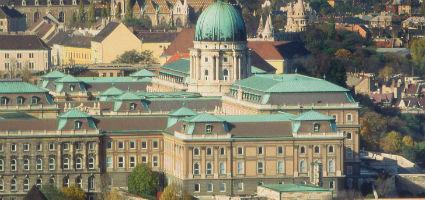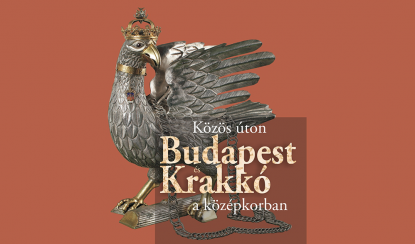2024. May 4. Saturday
Budapest History Museum - Budapest
 |
Address: 1014, Budapest Szent György tér 2.
Phone number: (1) 487-8800, (1) 487-8801
E-mail: btm@mail.btm.hu
Opening hours: Tue-Sun 10-18
|
The exhibition has closed for visitors.
2016.03.19. - 2016.07.24.
Museum tickets, service costs:
|
Ticket for adults
|
2000 HUF
|
|
|
Ticket for students
|
1000 HUF
|
|
|
Group ticket for students
(over 10 people)
|
500 HUF
|
|
|
Ticket for pensioners
|
1000 HUF
|
|
|
Ticket for families
|
2200 HUF
|
/ family
|
|
Group guide
(up to 20 people)
|
7000 HUF
|
|
|
Group guide
(20-30 people)
|
9500 HUF
|
|
|
Group guide
|
14000 HUF
|
|
|
Group guide
|
18000 HUF
|
|
|
Audio guide
|
1200 HUF
|
|
|
Photography
|
1000 HUF
|
Krakow and Buda were major cities in Europe in the Middle Ages which were considered as an equal with Nürnberg, Milan and Rome.

The exhibition presents common historical memories and events and also personalities who played an important role in the history of both towns. Among others, individual members of the Anjou and the Jagiellonian dynasty, the King of Poland and Prince of Transylvania István Báthory – who did not only connect the two cities, but also the history of the two nations.
Most of the objects in the exhibition give an insight into the everyday life of city dwellers. In addition, royal relics and items used on festive occasions are featured in the material. In addition to the large number of archaeological finds a lot of artefacts held in historical collections can be seen.
The exhibition was arranged by the Budapest History Museum and the Krakow City History Museum, which was supported by the Balassi Institute within the framework of the Hungarian Culture Year in Poland.

The exhibition presents common historical memories and events and also personalities who played an important role in the history of both towns. Among others, individual members of the Anjou and the Jagiellonian dynasty, the King of Poland and Prince of Transylvania István Báthory – who did not only connect the two cities, but also the history of the two nations.
Most of the objects in the exhibition give an insight into the everyday life of city dwellers. In addition, royal relics and items used on festive occasions are featured in the material. In addition to the large number of archaeological finds a lot of artefacts held in historical collections can be seen.
The exhibition was arranged by the Budapest History Museum and the Krakow City History Museum, which was supported by the Balassi Institute within the framework of the Hungarian Culture Year in Poland.
